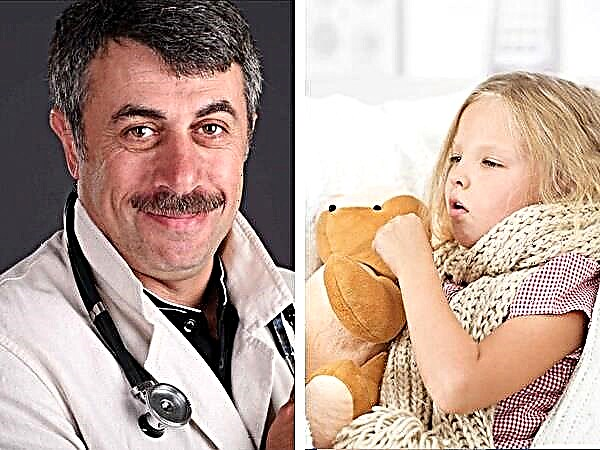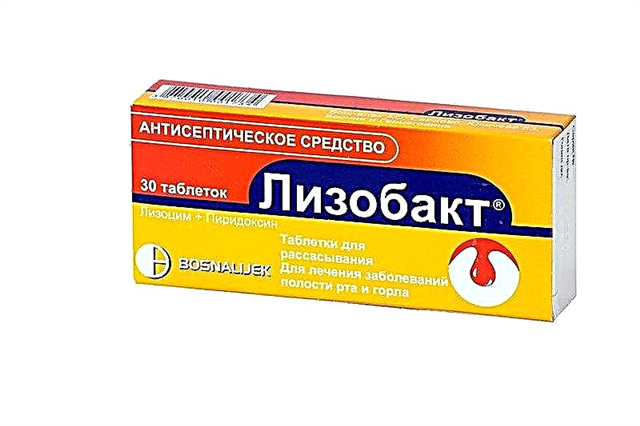
The appearance of loose elements on the legs of a child is recorded quite often. They act as an isolated symptom, and are accompanied by the occurrence of other uncomfortable manifestations.
Causes of occurrence
A variety of provoking influences lead to the appearance of rashes on the clean skin of the legs in the crumbs. At each age of the child, they can vary significantly. The appearance of a rash on the legs of a baby is not a manifestation of the norm and almost always speaks of the presence in the child's body of some kind of disorder. Localization of rashes in this case can be completely different.
Loose elements can develop both on the feet, soles, and on other parts of the legs. Systemic pathologies are accompanied by an abundance of various skin manifestations, which also extend to the legs and thighs of the child.


Various allergic pathologies provoke the appearance of rashes in children on the legs. The appearance of clinical signs in this situation is caused by the ingestion of substances with pronounced allergenic properties into the body. Most often these are various food products, chemical components and caring cosmetics for children. According to doctors, contact dermatitis often appears on the legs.
The occurrence of this pathology in the crumbs can also lead wearing clothes made from low-quality fabrics. Chemical dyes used in the process of manufacturing products get on the baby's delicate skin and cause massive allergic manifestations. The development of an allergy on legs is often caused by wearing trousers or jeans that are blue or black.

In infants, numerous red rashes may appear on legs. This is a manifestation diaper dermatitis... Wearing diapers leads to this pathological condition in a baby. The chemical components that make up the absorbent layer of these products irritate the delicate skin of the child, leading to the development of multiple rashes on it.


Most allergic rashes also manifest as severe itching. He can excite the baby both day and night. The intensity of itching can vary. With uncomplicated forms of allergies, the baby may feel only slight discomfort in the area of the damaged skin. If the disease is difficult, then the child begins to intensively comb the inflamed skin areas.
Food allergens quite often lead to the fact that rashes in a sick baby appear not only in the lower extremities. This condition is especially pronounced in children of the very young age. Ingestion of food allergens contributes to the appearance of a rash in the infant and on the cheeks.
In this case, loose elements may appear on the head, as well as on the arms and legs of the child. In infants, this condition is caused by the introduction of the first complementary foods into their diet.

Infectious diseases can also lead to the appearance of various rashes on the clean skin of the child's legs. Usually they are also accompanied by the development of a pronounced intoxication syndrome. However, in some cases, such diseases can occur without a high body temperature. A sick baby becomes more capricious, can refuse favorite dishes, tries to spend more time in bed, and limits active games.
In most cases, loose elements appear on the skin of a sick baby only a few days after the onset of the disease. In the first 3-4 days after the end of the incubation period and the development of adverse symptoms, the child's general well-being significantly worsens. The kid becomes more irritated and moody. Babies do not attach well to the mother's breast.

Chickenpox is accompanied by the development of a rash all over the body. The course of the disease is usually very severe. Body temperature rises to 38-39 degrees. Almost all parts of the body are covered with skin rashes. The rash persists, as a rule, for 3-5 days, and then gradually disappears completely. After the transferred infection, the baby retains good immunity to this disease.

Measles is a "quarantine" infection in children, which is also accompanied by the appearance of various rashes on the baby's body. They can cover the child's thighs and shins abundantly, as well as transfer to the feet. Intoxication syndrome with measles also manifests itself quite clearly. The baby feels severe weakness, at the height of the fever, he has a strong chill. Any baby who is not vaccinated against this infection can get measles.

Rubella can also lead to a rash on the child's skin. According to statistics, babies attending various educational institutions are more often infected with this infection. This infectious disease is transmitted from a sick child to a healthy one. The course of the disease is usually severe. The entire acute period of the illness, the baby is at home, observing the quarantine.


Some rather dangerous diseases can lead to the appearance of rashes on the baby's skin. These pathologies include various blood diseases. Disorders arising in the platelet link of hemostasis contribute to the fact that numerous small rashes and hemorrhages appear on the child's skin. The reason for the development of these pathologies, as a rule, is autoimmune.
The development of hemorrhagic diseases occurs with the appearance of multiple small rashes. The danger of these pathologies is that they can cause damage to internal organs. Symptoms usually develop gradually. Many of these pathologies manifest as episodes of deterioration and complete well-being. The most dangerous condition is death.
The development of rashes on the skin of the legs in babies can also lead untimely hygiene.
This promotes the active growth of staphylococci and streptococci, which can cause inflammation and various irritations. This manifestation is most dangerous in infants.

Excessive wrapping of the crumbs contributes to the violation of thermoregulation. This pathology is called in children prickly heat. It occurs more often in the warm season, when mothers choose too warm clothes for walking with the baby. Severe sweating only aggravates the manifestation of adverse symptoms. The ingress of pathogenic microbes can lead to the appearance of various pustules.
Another common infectious pathology in children is scabies... This disease is caused by scabies mites. A small rash is usually located between the toes on the feet. In this case, itchy skin is more pronounced in the baby at night.


The appearance on the legs of babies of a small itchy rash is a simple manifestation of insect bites. This situation usually occurs during the warm season when mosquitoes are active. Such specific manifestations may look different. Usually these are red spots or watery pimples, inside of which there is a serous bloody fluid.
Body temperature is usually kept within normal limits.

The most dangerous pathology, accompanied by the appearance of a bright purple rash on the lower extremities, is meningococcal infection, accompanied by the development of meningitis. With this pathological condition, the general well-being of the baby changes significantly. The child feels severe headache and dizziness, growing thirst, and impaired consciousness. The body temperature of a sick child rises to 39-40 degrees. The lips become dry, and the skin of the face becomes very pale.

Wearing poor quality shoes, which is made of synthetic materials, leads to the development of a pronounced "greenhouse effect". This contributes to the fact that sweating increases in the crumbs and specific skin rashes occur. Usually, this symptom is most often manifested in children attending sports clubs, as well as when wearing "non-breathing" sneakers.

Fungal infection also quite often contributes to the appearance of rashes on the skin of the feet. These manifestations mainly occur on and between the fingers. Excessive sweating of the feet only intensifies the manifestation of this symptom. As a rule, fungal eruptions are accompanied by severe itching of the skin. These pathologies usually develop for a rather long time, over several weeks or months.
Doctors also note that multiple small rashes can appear on the skin of the feet severe hypothermia. Manifestations of such "cold" urticaria can occur even after the child has simply wet his feet while walking down the street. Usually, these rashes look like small white or red spots that are spaced 2-3 mm apart.


What does it look like?
Allergic diseases, accompanied by the appearance of a rash on the skin, can manifest itself as a variety of skin manifestations. Spots are the most common clinical manifestation of skin allergies. They may look like small red bumps or various raspberry-colored patches. Outside, such allergic spots can be covered with skin scales, which are easily peeled off.
In some cases, the spots completely merge with the surrounding skin. They can also protrude several millimeters above its level. The surface of allergic rashes in this case is uneven and bumpy. This is due to the large amount of skin scales covering these rashes.


Also, allergic diseases are manifested by the appearance of small raspberry pimples. They usually itch a lot, which leads to the fact that the child is constantly combing them. The predominant localization of these rashes is the anterior surface of the legs or thighs. This pathological process is usually bilateral. A severe course of allergies is manifested by the occurrence of edema. The degree of its manifestation is different. The most terrible forms of the disease are accompanied by an increase in the affected leg in volume several times. In such a situation, the veins are clearly visible. They appear as long blue bands that run under the skin.
Blisters are also a fairly common clinical sign., which appears both in allergic pathologies and in various infections. They appear as skin pimples filled with serous or bloody fluid inside. The outer wall of these skin lesions is usually thin and easily damaged when touched.


Ulcers that appear in the area of hair follicles are most common in adolescents. According to statistics, this pathology develops mainly in boys. An increased testosterone level and an imbalance of other hormones causes the development of abscesses on the skin. This condition is quite pronounced during puberty.
It should be noted that the appearance of pustules on the skin is also caused by various endocrine system diseases. Babies with diabetes have a rather high risk of purulent blisters on the skin. This is caused by an increased level of glucose (sugar) in the blood.
Without eliminating the root cause that led to the appearance of adverse symptoms, it will not work to achieve a positive result.


Pustules in a baby can also appear when various infectious microorganisms. The most dangerous of them are staphylococci and streptococci. Actively multiplying, they lead to the appearance of various abscesses, filled from the inside with a yellow or greenish liquid. The course of staphylococcal infection is usually very severe and is accompanied by general weakness.
Where to contact?
If a child has various red pimples, you should immediately show the child to the doctor. Children's dermatologists are usually involved in the treatment of skin diseases. Pediatricians can also provide therapy for quarantine diseases in children. If there are skin rashes caused by hemorrhagic diseases or blood diseases, then in this case it is required to show the baby hematologist.

To make a correct diagnosis, you will need compulsory laboratory tests. All babies are required to undergo general clinical examinations of blood and urine. Biochemical studies are necessary only in case of establishing functional disorders that have arisen in the course of the disease in the internal organs.
Many hemorrhagic pathologies are accompanied by a decrease in the total number of platelets. Peripheral leukocytes can increase, like ESR.
Violation of normal parameters in the leukocyte formula, as a rule, indicates the presence of a viral, bacterial or fungal infection in the child's body.
How is the treatment carried out?
After the diagnosis is established, the doctor prescribes the course therapy for the child. To eliminate adverse symptoms, the appointment of antihistamines is required. They not only help to cleanse the skin, but also eliminate severe itching. As such drugs are used: "Loratadin", "Claratin", "Zyrtec" and others. These funds are usually prescribed for 7-10 days.
An improvement in general well-being usually occurs 2-3 days after the onset of the disease. In the future, antihistamines can also be used to prevent new exacerbations of allergies. The selection of the necessary drug is carried out by a child immunologist. For the treatment of allergies, it is very important to identify all the allergens that are causing the baby to develop adverse symptoms.
High-quality baby cosmetics is an important condition for maintaining healthy skin.
For young babies, you should choose products that do not contain any aggressive or irritating components. Cosmetics for children should not contain such additives, as well as rash-provoking dyes or fragrances.
When choosing such cosmetics for a baby, it is very important to pay attention to the markings that allow use at a certain age.

For the treatment of infectious pathologies, antibiotics are prescribed, which have a wide spectrum of action. The selection of such funds, as well as their dosage and duration of use, is carried out by a pediatric dermatologist. To do this, he assesses the presence of certain contraindications in the baby, which can limit the use of specific medications. Antibiotics are prescribed for children more often in the form of various ointments or creams.
For information on how to eliminate a rash on the legs of a child, see the next video.



